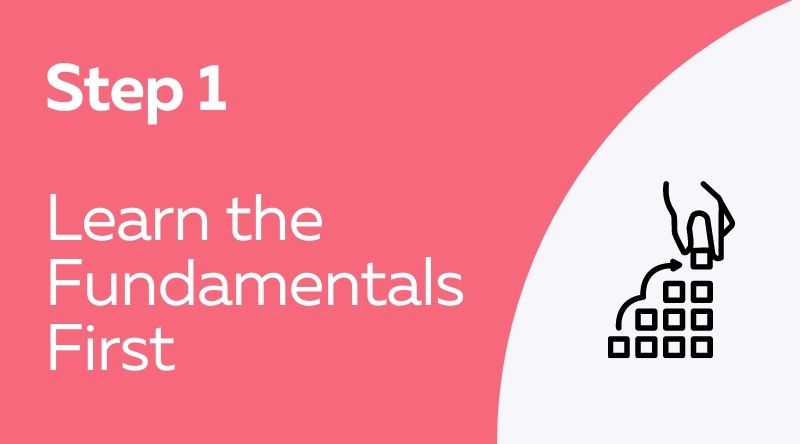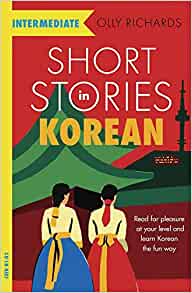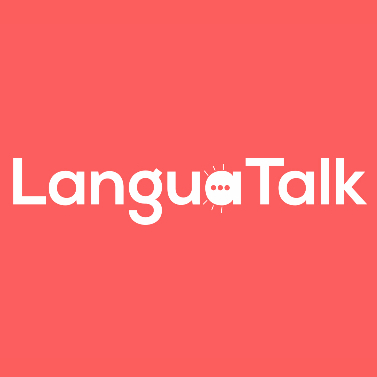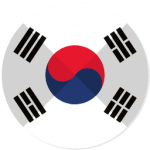It’s no surprise that learning Korean has become more popular recently – Korean culture has exploded in popularity all over the globe, from catchy K-pop songs to popular Korean dramas and movies on Netflix.
Korea is just now coming on the Western radar as an interesting location to visit, or even to live. Its culture and history are every bit as storied and intriguing as other countries in Asia. But until now, Korea didn’t have the same recognition as Japan or China.
All that is changing with the interest in Korean TV shows, movies, and music. Korean pop groups have captivated viewers all over the world with their crisp dance choreography, catchy lyrics, and vibrant music video cinematography.

Interest in K-beauty, especially skincare, has likewise caught the attention of the world spotlight for its bizarre ingredients and stunning results. And who can forget the bone-chilling horror movie “Train to Busan” or the historical drama series with a zombie twist, “Kingdom”?
People are also starting to take notice of the amazing landmarks Korea has to offer, steeped in a proud historical tradition. While Korea is more modest about its tourist advertising than other countries, it has plenty of places to sightsee – from the scenic, to the historical, to the downright strange.
Maybe you don’t necessarily want to visit Korea or live there. Maybe your hometown has a sizeable Korean population, or a Korea-town, and you’d like to try interacting with Korean people. There are plenty of ways to connect with and appreciate Korean culture without ever leaving your home country.
And what better way than to learn Korean?
Pro Tip
If you're looking for the fastest and most enjoyable way to learn Korean, then I recommend the Korean Uncovered programme.
With Korean Uncovered you'll use my unique StoryLearning® method to learn Korean through story… not rules.
It's as fun as it is effective.
If you're ready to get started, click here for a 7-day FREE trial.
Here’s what we’ll cover in this article…
If you’ve ever asked yourself any of the following questions, then this article is for you. If you want to skip ahead, just click the section that interests you.
Table of Contents
I’ll start by telling you about the fundamental aspects of the Korean language and its culture. Then I'll look at one of the major challenges faced by all beginner Korean learners – the writing system. Finally, I’ll finish with my recommended action steps to so you know the best way to learn Korean quickly.
Learning Korean requires a lot of hard work, but if you stick with it and practice regularly, it's an amazing tool that will become an invaluable part of your life.
Because this post covers everything you need to know as a beginner, it’s quite long! I’ve also prepared a special PDF version of the post so you can download it and read it anywhere, anytime.
Click here to grab your copy now! (It’s free)
Why Learn Korean?

Korea is most well-known, of course, for being an attractive location for native English teachers.
If you’re from an English-speaking country (such as Australia, New Zealand, the US, the UK, or Ireland) and the idea of teaching children is appealing to you, you can make decent money working in a public school or private English academy.
And that doesn’t just go for English teachers; the number of German, Spanish, and French teachers is also increasing.
1. Work, Study Or Both In Korea
You probably know someone who has taught in Korea, or else maybe you’re considering it yourself. A TEFL course to prepare for what to expect, a recruiter to help with the visa process, and a willingness for a change of pace can have you stepping into your new Korean apartment in a matter of months.
Teaching isn’t the only profession bringing curious foreigners to Korea; many people from countries around the world come to Korea for internships, or to work at international branches of their companies.
Korean universities are also an attractive option for those who would like to shake it up and try a semester abroad. It helps that Korea is by far one of the safest countries in the world.

2. Travel And Sightseeing
Korea is also a great stop-off place during trips around Asia, due to its centralised location. It is a more Westernised culture and can be a relief for travellers on long-haul world trips.
Yet it still has so many unique cultural elements to enjoy:
- Eat juicy Korean barbecue or spicy bibimbap (a dish of mixed vegetables and rice)
- Wear traditional Korean clothes (hanbok)
- Or meander through Gyeongbokkung Palace while listening to musicians pluck traditional stringed instruments
Of course, there are also lots of bars and clubs for the nightlife-inclined.
From big city of Seoul to the beaches of Busan and every tiny mountain village in between, Korea has a lot to offer by way of tourism, even though it doesn’t (yet) have the same world-famous reputation as Japan or China.
And, as mentioned above, the low crime rate in Korea and an overall safe atmosphere make it an attractive destination for travellers, especially women travelling solo.
3. K-Pop

To say k-pop appeared out of nowhere is an understatement… It exploded. In the past few years, Korean class enrolment in US universities rose 14%, largely because of k-pop.
When you enjoy music so much, and feel a connection to group members, naturally you want to learn more about the culture and language.
Though until recently most people’s only exposure to Korean music was Gangnam Style and Psy’s famous (infamous?) dance moves, recent k-pop groups have caught the eye of other people around the world.
The videos are well-produced, colourful, bright, and in some cases nearly psychedelic. The dance movements are crisp and in sync, and the songs are catchy: especially because the singers often mix Korean with English.
Of course, another allure is the members. They’re attractive, and their fashionable clothes in some cases spark trends worldwide.
Fan merchandise, a lot of which is in Korean, is a big draw for members of k-pop fan clubs. Lots of people join fan clubs for specific groups, or in some cases, for the group’s entertainment company itself.
Loyalty to one entertainment company (each of which has its own style and sound that it produces) is common. If you visit Korea, you can go on a tour of those entertainment companies, or special merchandise events to get rare collectibles.
Here's how to learn Korean with K-pop.
4. K-Dramas

K-dramas are also a popular form of media that’s taken the world by storm. In Korea, K-dramas are serious business: families sit down regularly to watch them together, K-drama stars advertise all the latest products, and slang trends emerge from their scripts.
Their dramatic plots harken back to 1980’s soap operas. But with better production, stunning actors, and realistic special effects.
While some comedic dramas border on the ridiculous (Have you heard of the “kimchi slap”? …Yeah, it’s a common trope for a character to slap someone with kimchi at some point), there are also:
- historical dramas to give you a glimpse into Korea’s Joseon period
- romantic dramas to melt your heart
- action dramas to keep you on the edge of your seat
- mystery dramas to keep you guessing
- and of course horror dramas – the most popular of which is currently “Kingdom”, a historical drama with a zombie twist.
Though the language used in Korean dramas usually does not imitate real life, it can still be fun to follow along and learn new slang.
5. What Are You Waiting For?

Though in the past, Korea was an enigma that you probably didn’t think much about, its relevance has exploded recently. With that, more and more people are feeling the itch to learn Korean.
You're likely one of them, or you wouldn’t have clicked on this link. Well, you’re in luck, because you’ve chosen one of the easier Asian languages to learn. While it might look daunting at first, your learning can really snowball once you get started.
Whether you’re hoping to…
- study abroad in Seoul
- visit Korea on your next adventure
- teach in a Korean English academy
- or learn more about Korean culture
… it’s a good idea to have a solid basis of Korean.
While you'll be able to get by with English in Seoul and other large cities, you’ll have a much more immersive and satisfying experience if you’re able to speak enough Korean to articulate what you want and connect with local people.
So, let’s jump into it.
Key Features Of The Korean Language

Korean is spoken by about 80 million people around the globe. It’s a “language isolate”, meaning it technically doesn’t have any related languages.
However, you’ll still find some similarities with Japanese (the grammar is nearly identical) and Chinese (where many of the word roots are from). If you already know those languages, especially Japanese, you’re in luck.
If you don’t, though, don’t worry: Korean also borrows quite a lot of words from English.
The origins of Korean are fascinating and you can learn more about them in the video below:
Otherwise, let's take a look at those key features of Korean.
1. Korean Dialects
Korean has several dialects, so if you visit or live in Korea, you might hear pronunciation that sounds a little different from “textbook” Korean that you hear while learning.
For example, in Jeonju you'll hear the “Jeolla” dialect around town, and vowels are pronounced slightly differently there. However, unless you converse with elderly people, the dialects aren’t so different that you’ll be overwhelmed.
2. Korean Word Order

One of the most obvious differences between Korean and English is word order. Right from the beginning, you'll notice that words go in different places in Korean sentences and it can take a little while to get used to!
English is what we call an SVO language. This means that the subject (S) comes first, followed by the verb (V) and finally the object (O).
I know, I know – that already sounds confusing! But it's not. Take a look at these sentences, for example, and you'll see what I mean:
She loves him
- She = subject
- Loves = verb
- Him = object
He threw the ball
- he = subject
- threw = verb
- the ball = object
Simple enough, right?
Other common SVO languages include French, Spanish, Russian, and Chinese.
Korean, however, is an SOV language. This means that in Korean the verb goes at the end of the sentence. So, in Korean, the sentences above would be phrased as:
- She him loves
- He ball threw
Other well-known SOV languages are Japanese and Hindi.
This probably sounds quite intimidating. But once you get used to the unfamiliar word order, it gets easier.
After you learn some Korean nouns and verbs, you can experiment by putting some simple sentences together to get a feel for it.
3. Korean Use Subject Markers & Object Markers
Now, why is it important to remember which words are subjects and which are objects? Well, Korean has subject markers and object markers.
Huh…?
I know this all sounds very complicated. But bear with me…
All this really means is that Korean adds special “marker” words in each sentence which clarify who or what is doing an action and who or what is receiving the action.
- Koreans mark the subject of the sentence by adding 이 or 가 at the end of the word
- Objects are marked with 을 or 를.
For example, let's take a look at the sentence “She loves him”:
- “She” is the subject (the person performing the action) so it would have a subject marker after it.
- “Him” is the object (the thing receiving the action), so that word would have an object marker
This aspect of Korean grammar takes some practice to get used to because we don’t have most of these particles in English, but it will begin to feel natural with time.
4. Levels Of Formality In Korean

Korean has different levels of formality depending on your age and the age of the person you’re speaking to. There are:
- Informal forms: Informal is only used with people within one year of your age (yes, even if you’re close friends!)
- Formal forms: used for people two or more years older than you or in situations where you’d like to be polite
- Honorific forms: used for very formal situations such as for your boss or your parents-in-law
Honorific Forms In Korean
The good news is that honorific forms are pretty easy to spot since they often end in -니다. You’ll regularly see sentences that end in 습니다 and 합니다.
Now here's a secret that’s a huge time-saver… assuming you’re an adult and not a child…
Ignore honorifics.
That's right! Just forget about them!
Lots of Korean lessons and textbooks automatically start off with honorifics out of habit, because that’s what Korean children are normally taught first. But, to be honest, you'll probably never have to use them in real life. So I'm not joking, you can simply skip the chapter on honorifics in your textbook.
The only exceptions to this advice are three words:
- “thank you” (감사합니다)
- “excuse me” (실례합니다)
- “sorry” (죄송합니다 or미안합니다)
If you’re going to be working at a Korean company, it might be nice to memorise these phrases to be able to speak politely to your boss.
But other than that, you’ll never use these forms.
Besides several verbs and nouns are actually different in honorifics than regular speech. All the more reason not to learn them unless you really have to.
Formal Korean
Formal forms in Korean will end in -요. That’s it. If a sentence has that ending, it’s formal.
You’ll be using the formal forms most often, so my advice is to get comfortable with them from the beginning. Once you start getting the hang of verbs, you'll find it's easy – you just tack the formal ending on to them.
- Asking a question at a shop? Use the formal form.
- Talking to your coworker? Formal form.
- Taxi driver? Formal form.
- Talking to new people you just met who are around your age? Still formal form.
You'll use this for about 90% of your daily conversations in Korea or with Korean friends. When you’re looking up phrases online, you should always start by looking for the formal form.
Informal Korean
Informal forms in Korean cover everything else. They can vary a little by regional dialect, but typically an informal sentence will just omit the -요 ending, or it will end in -지. This is the ending you’ll hear most often in K-dramas and K-pop songs.
A Beginner's Guide to Hanguel: The Korean Writing System
No matter your intentions for learning Korean, the first step is to learn hangeul. Hangeul (sometimes romanised as “hangul”) is Korea’s writing system. It’s called the “Korean alphabet,” but it’s actually a syllabary, meaning that the “letters” are entirely phonetic.
Hangeul is actually one of the easiest “alphabets” to learn. And it was designed that way.
King Sejong created the alphabet in an easy-to-write way, where the letters mimic the way your mouth should move as you say them. It was originally created to boost Korea’s literacy.
And it did – Korea still has one of the highest literacy rates in the world today, thanks to the intuitive nature of hangeul. It’s much better than Korea’s former method of writing, which was based on the Chinese character system. However, as you learn more, you’ll find that a lot of words come from their Chinese roots.
1. Why Learn Hangeul?

Hangeul is so beginner-friendly, you could even learn it on the plane on your way over! So, why learn hangeul first? Here are 4 great reasons.
Reason #1: Reduce Your Reliance on Korean Romanisation
Well, though most materials you can find for beginners includes romanised versions of the words, it will be difficult to get the correct pronunciation down if you’re relying on the romanised versions.
Reason #2: Perfect Your Korean Pronunciation
Korean has several sounds that English doesn’t have (though they might sound very close!) and following English letters will result in wrong pronunciation.
Reason #3: Get to Grips With Korean Fast
Reading hangeul is also excellent practice – the more you read it, the faster you’ll be able to understand words and visualise the hangeul letters in your head.
Reason #4: Avoid Confusion Between The 2 Styles Of Korean Romanisation
Another complicating factor is that there are actually two versions of romanisation: the old style (which was used until the early 2000’s) and the new style (which is mostly what is used today).
Though most things are romanised consistently in the new style, plenty of restaurants, place names, people’s names, landmarks, and more are spelled using the old style. To prevent confusion, referencing the actual hangeul is the way to go – especially if you’re planning to visit or live in Korea.
2. What Is Hangeul?

So what exactly is hangeul? There are 24 “letters”: 14 consonants and 10 vowels. King Sejong created the letters to look like the shape your mouth and tongue should make as you speak.
For example, the vowel “ㅡ” should be said with your teeth closed and your mouth pulled into a line, just the way the letter looks. Most letters just make sense when you look at how they’re spoken.
The characters link together to form a cluster, or a batchim. For example, the two-syllable word nam-ja (man) would look like this:
- 남자.
- ㄴ= n
- ㅏ= a
- ㅁ= m
- ㅈ= j
- ㅏ = a
Nam, the first syllable, clusters together with the consonant on the bottom. And ja clusters together side-by-side since there is no ending consonant.
Korean also has a lot of “Konglish” words that are borrowed from English, so it's rewarding to find words that you know around town. You'll be walking down the street one day sounding out a sign… “Hee – ling ma – sa – ji… Oh! Healing Massage!” and you'll know that it's starting to click.
You'll even be able to start reading menus with Western food and drinks on them fairly quickly, since Korea uses the English words transcribed into Korean: “burger,” “cola,” “pasta,” and so on will all be easy for you to read from Day 1, and you'll be able to order for yourself. How rewarding is that?
And unlike English, Korean doesn’t have many “exceptions to the rule,” so to speak. Once you learn the rules for how the words sound, you will be able to read everything. No tricky silent letters or weird spelling… A major advantage of Korean over English.
3. How To Learn Korean Hangeul Fast

The easiest way to retain the sounds in your head is to practice reading things. When you’re in the early stages, the longer you go without practising, the easier it is to forget the letters.
If you’re in Korea, practice is easy – read everything! A lot of things are “Konglish” – English in a Korean accent. You can easily order food in a foreign restaurant (e.g. “hamburger”, “spaghetti”, “cola”, “pasta”, “salad”, etc. will be phonetically written in hangeul), or at any café or bar.
If you’re not in Korea, an easy way to start getting used to reading hangeul is to read a list of Konglish words, like the Ultimate Konglish list. It’s satisfying to sound things out and then have the lightbulb moment of what word it is.
Keep in mind that some Konglish words are “wrong” – for example, “dress” is “one-piece.” That said, Konglish lists can be a great introduction to slang and Konglish words that you’ll hear in conversation.
What You Need To Know About Korean Culture

From a cultural, political, and economic standpoint, Korea is just fascinating. Sandwiched between two large superpowers (China and Japan), Korea has been through long periods of vulnerability, colonisation, and war.
Out of this emerged a defiantly unique and proud culture which has kept thriving despite adversity.
Not long ago, even in the 1980’s and 1990’s, many people lived in poverty. Democracy is only a recent development in Korea, with many of the past rulers being corrupt military dictators. And the pain of the separation from North Korea is still fresh.
These are things to keep in mind when looking at elements of Korean culture or traveling to Korea. If you're visiting Korea, a trip to the DMZ (de-militarised zone) is an excellent way to snap things into perspective.
Given its history, it’s amazing that Korea has exploded the way it has. Korea’s landscapes and cityscapes change with almost alarming speed – buildings pop up, new attractions are formed seemingly out of thin air, and new cultural scenes emerge.
You might find, if you take trips to Korea even two years apart, that you’re coming back to a completely changed place.
Lively Korean Nightlife

Working hard and studying diligently are integral to Korean society, given that there are so many people vying for similar jobs. After all that working hard, Koreans party hard as well – Korea has one of the liveliest drinking cultures in the world.
Here's a quick glimpse into that part of the culture:
- surprisingly cheap soju (rice alcohol)
- tons of chicken-and-beer places (also called Chimek, a mixture of the words for “chicken” and “beer”)
- drinking at the outdoor tables of convenience stores (called Kamek, a mixture of the words for “store” and “beer”)
- and of course the makgeolli (rice wine) restaurants… where you’re served large pots of makgeolli along with more sides you can handle, ranging from kimchi pancakes to fish to pigs’ feet to live octopus.
Clubs are also a popular staple of Korean nightlife, though they might not be the clubs you’re used to. Many have one section with tables, where you drink and eat food as slow music plays.
When the fast music comes on, you go to the dance floor portion of the club, dance, and then sit down a few songs later when the slow music returns.
Noraebang, or karaoke, is a hobby a lot of Koreans share. Especially late at night, when everyone is properly loosened up, lots of people flood to the karaoke rooms to sing their hearts out and drink some more.
Noraebangs are set up in private rooms that you can rent with friends, so no worries about singing in front of strangers.
Ever-Changing Korean Fashion

There is also a theme of conformity in Korean style. Trends sweep the nation and disappear as rapidly as they came. You might find that a huge number of people are all wearing the same shoes, or the same funky hair accessory, or carrying the same bag.
Fads in Korean fashion range from
- the practical (ankle-length padded winter coats)
- to the bizarre (skincare routines involving snails or placenta!)
However, you can’t deny that Koreans have their own unique fashion sense, and are generally remarkably well made up and well dressed. The style tends to be slim-fit mixed with baggy, with some nineties fashion thrown in.
Korean Popular Culture
A lot of elements of Korean culture reflect its history. Many of the most popular Korean dramas are based in the Joseon Dynasty, when Korea was valiantly fighting outside forces for its independence.
K-dramas in contemporary settings are, of course, often centred around love and wealth. It’s used as an escape fantasy for many Koreans. While you’re studying hard every day with very little free time, you can watch shows about attractive teenagers with seemingly endless free time get into mischief and fall in love.
While you’re working long hours at your tiring job, you can watch shows about a handsome, rich stranger who sweeps you off your feet. There are also many tales of backstabbing, mystery, intrigue, and more. Koreans often discuss plots with each other and eagerly wait for new episodes to air.

The vivacious spirit of Korea’s ever-changing culture is evidenced in K-pop, with its bright sounds and dynamic energy. K-pop had its start in the late 1990’s, but has soared to new heights of popularity recently as it’s getting more exposure.
Korean teenagers like to choose their favourite members and join fan clubs, while adults enjoy the songs for their catchy melodies and peppy energy.
The almost futuristically clean levels of production K-pop videos have is impressive, even if you’re not a fan:
- the videos are flawless
- the dance moves are crisp and complicated
- the vocals are well-produced
- the costumes are creative
- and the settings and colours used are intoxicatingly vibrant.
While K-pop has long been popular in Southeast Asia, it’s no wonder that it’s starting to take the West by storm.
Pro Tip
Because culture is such an important part of language learning, I’ve included a series of bonus culture lessons in my StoryLearning course, Korean Uncovered. Get started now with a FREE 7-day trial!
Want to download a PDF of this article to read later? Click here to get your FREE copy.
5 Common Challenges For Beginner Korean Learners

So, now your hangeul is decent enough that you can sound things out without referring to your hangeul guide every other word. Don’t go shopping for a textbook just yet.
First, you should learn some basic Korean phrases to flex your hangeul muscle and start with pronouncing some basic sentences
- “Hello”
- “Goodbye”
- “Excuse me”
- “Thank you”
- “I am from [insert country here]”
and other simple sentences are a good place to begin.
You should start by reading some phrases first, using your hangeul skills to piece together how to pronounce them. And then you should check your pronunciation against some audio from a website or Youtube. As mentioned before, ignore romanisations and just stick to reading the hangeul.
There are five questions you’ll be asking yourself as you learn. Luckily, I have some answers.
1. Getting To Grips With Korean Pronunciation
The most important advice for learning Korean is not to slack when it comes to perfecting your hangeul pronunciation. There is no “close enough” in Korean. Vowels are especially important to master. Some sounds:
- ㄹ
- ㅃ
- ㄲ
- ㄸ
- ㅉ
- ㅆ
are completely unfamiliar, and it can be tempting to spend lots of time mastering those.
However, you can’t neglect the letters which sound similar to English, but aren’t quite the same:
- ㅗ
- ㅡ
- and ㄱ
all require an attentive ear. For these, Youtube videos and other instructional videos online are indispensable.
Listen closely, and also be sure to keep an eye on the speaker’s mouth as they speak. For vowels, though it might feel silly, you actually do need to move your mouth in what will feel like an exaggerated way to get the right sound.

The number one sound that’s difficult for English speakers is the ㄹ sound. It involves a tongue movement we don’t have: you flick your tongue backwards instead of moving it forwards. In fact, it’s pretty easy to practice.
Let’s do it now: Say “water.”
Notice how (if you’re American) you didn’t really say a “t”. Your tongue tapped the space behind your teeth.
For the Korean ㄹ, you’re going to do something similar to that sound, but with a difference: before your tongue touches the space behind your teeth, flap the tip of your tongue from back to front.
It should sound almost like a very soft “d”. You can practice a few times by using this technique before trying to use it in words.
Why is it so important to get it exactly? I’m close enough, aren’t I? Well, you have to keep in mind that even though you’ve been hearing accented English all your life, most Koreans have never heard a foreigner speak their language. They’ve only heard “perfect”, unaccented speech.
This means that a lot of people, especially older Koreans, will be completely unable to understand you if you’re even a little bit off.
2. Korean Sentences Can Have Multiple Variations

The most confusing conundrum for beginners. There are several things that will pop up online when you search for “beginner Korean”.
But you might notice that each “simple” phrase has more than one version. For example, there are two versions of “hello,” four versions of “thank you,” etc. It can be a little overwhelming.
However, please note: don't use the informal form with someone unless you're the same age and good friends.
I cannot stress this enough. The quickest way to get someone annoyed with you is to use the informal form incorrectly with them. You can only use the informal form presumptively if the person you’re speaking to is a child, or is a few decades younger than you.
Otherwise, only use it with good friends who are your age. Don’t use it with coworkers. Yes, it’s a hard and fast rule. Yes, it can be a little weird.
Even if your good friend from childhood is two years older than you, you will be using the formal form with them forever unless they explicitly tell you the informal form is okay.
The biggest faux pas foreigners make in Korean is using informal language because that’s what they’ve seen in K-dramas.
Don’t do it.
3. Korean Intonation

Korean sentences seem to have a particular cadence, or pattern of rising and falling, that can be a little strange to foreign speakers. If your cadence is off, it might be difficult for someone to understand you.
As you learn, make use of Youtube videos to see how native speakers say declarative sentences and questions. Try to mimic this.
Women in Korean dramas use something called “Aegyo”, or baby talk. Do not use this. It is not appropriate to use in real life, unless perhaps you are choosing to use it to be overly flirtatious.
4. Memorising New Korean Vocabulary
Once you’ve got a rough idea of some phrases and the pronunciation and cadence of Korean words and sentences, you’re nearly at the point where you can start looking for a book that will help you.
However, something that helps tremendously is first learning lots of vocabulary. Textbooks will generally just teach you sentence structure. But it'll be a lot easier to make sentences if you have a large vocabulary pool to draw from.
You can use lots of resources online to learn basic verbs and nouns. And many have audio clips you can check yourself against. Other words, such as days of the week, country names, and colours are useful as well.

Everyone has their own way of learning vocabulary:
- You can use paper flashcards if you’re the type of person who likes tangible study items (and this is great for some Korean writing practice as well).
- You can use online flashcard websites to make flashcards, and many websites even have quizzes you can make with the vocabulary words.
Use whatever works best for you. It helps to group words by subject and tackle them that way.
If you're visiting or live in Korea (or near a Korea-town), go out and listen for those words that you know. Look around you and try to describe as many things as you can using the Korean words you know.
If you live in Korea, learning the words for places around town (pharmacy, park, shoe store) will be especially useful.
For around-the-house words, you can use the computer game Influent. In the game, you walk around a house and click on things, and it gives you the word written in hangeul and audio to go with it.
You can do timed “scavenger hunt” style games where you have to find the things in the house based on the Korean word. At higher levels, it also gives you adjectives and verbs to go along with the nouns. It’s pretty neat.
You’ll probably want to learn how to count at some point. Well…
5. Korean Has Two Number Systems

Yeah, Korean has two sets of numbers.
- One system is called “Native Korean numbers”
- and the other system is called “Sino-Korean numbers”
Choosing which number system to use can be confusing, and even Koreans shift back and forth in some instances. Don’t be embarrassed if you use the wrong one – Koreans will still generally know what you’re talking about.
#1 When to Use Native Korean Numbers
In general, Native Korean numbers are used for:
- objects you can see/touch, up to the number 99
- to tell time
- and to say your age – although when you start getting to age forty or so (even Koreans can’t agree on which number it is), they’ll switch over to Sino-Korean numbers.
#2 When to Use Sino-Korean Numbers
Sino-Korean numbers come from Chinese, so their pronunciation is very similar to the Chinese and Japanese number system.
They’re used for:
- saying dates
- addresses
- expressing lengths of time (e.g. “two weeks ago” would use Sino-Korean),
- phone numbers
- and money amounts.
For now, try to learn Native Korean numbers up to ten or so, and also figure out how to say your age. In Sino-Korean, it’s useful to learn up to ten, and also how to count by tens (10, 20, 30, etc.) if you’ll be dealing with money.
Is Korean Hard To Learn?

The short answer is, “Yes, but not as hard as you think.” You might have read some online articles describing Korean as “the hardest language to learn for English speakers!” but that’s not necessarily true.
While a lot of elements of Korean will seem alien and clumsy to use at first, it’s easy to start advancing quickly with dedicated practice.
Grammar, in particular, is a point of contention for many learners. People tend to be very doom-and-gloom when it comes to learning Korean grammar – “It’s so hard!” is a sentence often uttered in despair – to the point where they give up trying to learn it at all.
Korean grammar is very different, yes. However, once you get past the initial difficulty of Korean sentence structure, it’s smooth sailing and you can express yourself pretty well.
It doesn’t start getting atrociously hard until you’re at much higher levels, such as studying academic-level Korean for a Korean residency visa.
For the rest of us, just stick to expanding your vocabulary and taking the grammar one concept at a time. Those of you who learned one of the Romance Languages in school, go easy on yourselves. It’s natural that Korean will take more time to pick up.
5 Pitfalls to Watch Out For As A Beginner Korean Learner
1. Don't Translate
In school, your foreign language teacher always told you not to use online translators. I’m betting you probably did anyway, right? Well, no joke, don’t do it with Korean.
In general, translators are not great with SOV languages, and the amount of double meanings Korean words have means you’ll often get gibberish sentences. Don’t do it.
Instead, you can use the Naver Dictionary app. You can put in a word, either in Korean or English, and it will give you not only the multiple meanings, but also some sample sentences in both English and Korean so you can see the word used in different contexts.
It does also include a translation function by Papago if you really need a quick translation. For anyone living in Korea, this might be useful if you’re in a pinch at the hospital, bank, etc. Papago is still going to sometimes give you wrong translations. But it’s still way ahead of Google Translate.

Best of all, the Naver Dictionary app has a Korean “word of the day”, a Korean “idiom of the day”. And some Korean sample dialogues with audio on the homepage for some extra practice.
Dongsa is a simple app where you put in the infinitive form of the verb, and it will give you all the different conjugations – past, future, present progressive, present perfect, etc.
This can take a lot of the frustration out of irregular verbs. Korean doesn’t have nearly as many irregular verbs as English. But it does have some, and Dongsa is great for navigating them.
2. Don't Memorise Long Lists Of Random Korean Words

No one likes memorising things. It’s boring, and you’ll often forget most of what you learned very quickly. Group your vocabulary by type:
- things around the house
- food
- feelings
- colours
- common verbs
- sports words
- animals
- places around town
Whatever you’re interested in.
Then, as you’re out and about, try to recall those words as you see things. Look out for more words you don’t know, and make a note to look them up later.
Spend one to two weeks focusing on just one group of words, making sure to periodically go back to revise and quiz yourself so you don't forget old words.
Everyone has a different method of learning vocabulary that works well for them:
- Some people like to write lists of vocabulary words in a notebook and quiz themselves.
- Some people like physical flashcards, while others like flashcard apps.
Try a few different ways and see which one you like best.
3. Don't Be Afraid To Make Mistakes

You’re going to make a lot of mistakes, but that’s fine. (The “Fear Villain” will try to convince you otherwise, but don't listen to her!)
It can help to have a Korean friend, or a Korean-speaking friend, as a conversation partner.
But, if you notice that they’re criticising you too much, or otherwise making you feel bad about your mistakes, find another person to practice with.
If you notice yourself making the same mistake over and over again, have a place in your Korean notebook where you can jot down that mistake and write down some examples that you can reference easily.
It’s important to have some sort of casual medium to practice where you don’t have to worry so much about mistakes. For example keep a Korean diary where you just write down things about your day. It gets some stress-free practice into the day. Plus, when you're at a lower level, it’s an excellent way to practice past and future tense.
Having someone check for mistakes can also be a great resource. For instance , you could give your diary to a Korean friend and have them discuss it with you over coffee.
You can ask them not to correct “small” mistakes (such as spelling), but to point out “large” mistakes like verb tense errors, instances where I just completely used the wrong word, or places where my sentence structure was wrong.
4. Focus On The Language, Not The Resources

Remember that your end goal is to be understood, not necessarily to be right. You’ll progress much faster if you simply try to use the Korean you do know, rather than reaching for Naver Dictionary to use a high-level phrase you don’t know and won’t remember.
Your textbooks, apps, and notebooks are just your tools, but the language itself should be your focus. Don’t neglect your speaking and listening in favour of trying to hammer down the grammar exactly right.
It’s good to get out, talk to people, and overall just use the language, because it’s easy to get lost in a sea of sentence structure and vocabulary.
5. Don't Give Up On Your Korean Journey

Learning a language can be difficult, but Korean in particular is so different from English that it can be easy to get frustrated.
If you live in Korea, surrounded by Korean, it can also be easy to get Korean overload. Have some Korean resources that can be your “breather” to take a break like:
- Korean dramas: Korean dramas are great for listening practice, and they can be a great way to review vocab if you keep your ears tuned for vocab you know. Try to stay away from some of the historical dramas, as they can use old-fashioned Korean that won’t be familiar to you.
- Korean songs. You can pick a song you like, print out the lyrics in Korean, and try to figure out their meaning. You can then look up the English meaning to check how close you are. After, you can sing along with the song, playing the music over Youtube at slowed speed. Maybe you can even take your skills to the karaoke room (noraebang) to surprise all your friends…
- How Koreans Talk: A Collection of Expressions. This book has common Korean phrases, Korean idioms, insults, and more. It can be really fun to learn some phrases to throw into conversation (just be careful, as some of them are inappropriate!) or just learn the origin of some bizarre Korean proverb.
Just have fun with it, and try to keep your motivations in mind as you go. Find some aspect of Korean that you’re interested in (even things like Korean video games, Korean fashion, Korean movies, etc.) and find a way to turn that into a fun lesson for yourself. You can take breaks to “learn” without spending every second studying.
5 Steps to Learn to Speak Korean For Beginners
1. Enrol In Korean Uncovered To Learn The Fundamentals (And More!)

One important thing about learning a language is that it must come from the learner, not the teacher. The teacher’s job is to guide you – but you must do the learning.
This means you will need the necessary tools to learn, and a good beginner course is indispensable.
You’re going to need lots of input via reading and listening in order to move beyond beginner Korean and grow your vocabulary. That's why I've created my online Korean course – Korean Uncovered – to teach you through the power of story.
You'll listen to and read your first book in Korean, and our expert Korean teacher Minji, will help uncover the grammar and vocabulary in the story, chapter by chapter.
By the time you've finished, you'll be a confident and well-rounded Korean speaker, ready to use your Korean in the real world!
Get started now with a FREE 7-day trial
2. Set Short And Long-Term Goals

Fluency is a coveted trophy for any language learner. But it's a long-term goal. If you only focus on the finish line, you'll probably get discouraged and give up!
So that's why you need to set some short-term goals to kick off your learning and also feel a sense of progress. As you tick off short-term goals from your to-do list, you'll have a real sense of achievement, even if fluency is still a way off.
Using online resources and your textbook, try to focus on basic vocabulary you’ll need to use and plugging those into the basic sentence structure. That's a great short-term goal to get started in Korean.
Start with sentences like “The apple is red” and “I like oranges” before gradually adding in prepositions, verb tenses, and other features that you learn from your course or textbook.
3. Memorise Key Korean Phrases

It’s a good idea to have some Korean phrases in your toolkit that you can pull out and use with ease. After the basics (“Hello”, “Goodbye”, “Thank you”, “Excuse me”) you can start memorising some sentences you can use on an everyday basis.
Restaurant sentences, for instance, are easy to start using immediately:
- “More water, please”
- “One more cup, please,”
- “I’ll have two of these”
and other common phrases can be rewarding to know. Other good places to start are:
- Shopping phrases (“How much is it?” and how to say money amounts),
- introduction phrases (“Nice to meet you”, “How old are you?”, “I’m from the UK”, etc.),
- and friendly platitudes (“How have you been?”, “Get well soon!”, “See you tomorrow”, etc.)
4. Don’t Get Too Hung Up On Korean Grammar

While it’s important to keep grammar in mind and keep studying, don’t forget to exercise your other Korean skills as well.
- Try to practise writing a diary entry, story, or other fun passage without too much regard for grammar.
- Listen to the CD that comes with your book, a beginner Pimsleur Korean lesson, or the podcast from Talk to Me in Korean to boost your listening skills as you drive to work or take a walk.
- Read some basic stories in Korean to enhance your reading speed.
- Practise speaking, whether it’s reading sentences out loud to yourself, or finding a conversation partner.
Which brings us to the last, most important tip for Korean success…
5. Find Korean People To Speak With

This sounds like it might be difficult to do, especially if you live in a country without many native Korean speakers.
Something that a lot of people jump into right away is a language exchange. It sounds like a win-win – you get to practice your Korean, and the other person gets to practice their English. Perfect, right?
However, be careful with these. Make sure you choose a good conversation partner, and don’t be afraid to end it and move on if it’s not working out.
Some tips for a successful language exchange:
- Make a schedule with your partner and stick to it. Agree on set times to speak ONLY in English and ONLY in Korean, no other languages allowed. Set a timer (30 minutes for each, an hour for each, whichever) and switch as soon as the timer goes off. This is a common issue, so make sure your partner is respectful of the schedule. (And make sure you are, too!)
- Have something ready. If you’re a beginner, “holding a conversation” isn’t really going to last for more than a couple minutes. Bring some materials with you for if you get stuck, whether it’s a textbook, your Korean diary, or some sentences you practiced writing with a specific grammar point. You can have your partner check your work, you can read the sentences out loud, and your partner can help you with your pronunciation.
- Be wary of group language exchanges. Some local communities or universities have meet-ups for people to congregate and talk in Korean and English with each other. However, be cognisant of how much practice you’re really getting at the language exchanges. A lot of times, they’re more for socialising in English than actual practice.
- Start something yourself! If you can’t find any resources near you to practice Korean, you can start your own language exchange. Or start a study group meet-up with other people in your level who are practicing Korean.
If you can’t find anything, or if you want more to supplement your speaking skills, you can always find tools online that can help. Most sites require a membership fee or a one-time fee, but there are some free sites out there. LanguaTalk is my number one recommendation for finding high-quality Korean tutors.
Resources To Learn Korean Online
Now that you’re ready to start learning Korean, these are my recommended resources to learn as quickly as possible.
Online Korean Courses

- Korean Uncovered – My comprehensive online Korean course that teaches you Korean through the power of story. Learn to speak Korean like a local and create your ideal life, all while enjoying an entertaining story in Korean! Get started now with a FREE 7-day trial!
Test Your Current Korean Level
Not sure of your current level in Korean? Take my FREE online Korean level test and find out, so that you can choose the right resources and strategies for your level.
Korean Books For Learners

- Short Stories In Korean For Intermediate Learners – One of the best ways to improve your Korean and expand your vocabulary is to read Korean books. I’ve written a series of bestselling short stories books for beginner and intermediate learners and the Korean edition will be available soon. If you enjoy reading, you’ll love these stories, which are packed with special features to help you understand and – above all – enjoy reading Korean! Coming soon on Amazon Kindle and in paperback.
Learn How To Speak Korean

- LanguaTalk – This is my favourite website for finding high-quality Korean teachers. LanguaTalk only accepts the top 10% of applicants, so you can be sure that you'll find a Korean tutor who can help you make progress in the language fast with personalised 1:1 lessons.
Now You Are Ready to Start Learning Korean!

There are so many reasons to learn Korean.
- The culture is interesting and has a long history
- The music is catchy
- Korean TV shows are fantastic entertainment
- The fashion is cutting-edge and effortlessly stylish, as are the celebrities.
- The sights to see in Korea are some of the best in Asia
It’s no wonder Korean is has one of the fastest-growing learner demographics.
Despite this, if you want to progress towards fluency in Korean, you need a solid start. The Korean language isn’t as terrifyingly complex as people make it out to be.
But the grammar can still be a bit daunting to a learner coming from an English or Romance Language background. The tips you’ve read today can help you avoid common problems you might encounter.
Keep in mind the things that you think would help you, in your unique learning style, and the resources you can access where you are. What works for someone else might not work for you, and that’s fine.
Whether you’re living in Korea, studying in university, interested in your local Koreatown scene, or just plain fascinated with Korean culture, there are always methods that you can use to improve your Korean.
Online tools, textbooks, and Korean media are useful to have at your disposal. But remember that the most important traits of a successful Korean learner are dedication and patience.
Dedicate some study time every day, even if it’s only 15 minutes, to try to review what you’ve learned and learn at least one new thing. If you start slacking on your study time, you’ll start forgetting things, and it will be more difficult to pick up where you left off.
And, of course, be patient with yourself. Allow yourself to make mistakes, approach difficult concepts piece by piece, and remember that your goal is to understand and to be understood.
If you find yourself becoming overwhelmed, take a step back and spend some time with some of the “fun” Korean things you’re interested in.
Hopefully you’ve taken some useful tips from this guide that made learning Korean seem easier than it did before. With these ideas, you can start thinking about your learning plan and researching the resources you’d like to have on hand. 항상 화이팅! (You’ve got this!)
I hope you’ve found this post helpful!
If you have a friend learning Korean, please take a moment to share this post with them, it would mean a lot to me! (You can click here to send a Tweet!)
I know this is a long post and it’s difficult to take everything in all at once. That’s why I’ve created a special PDF version which you can download and refer to any time you need it! And if you download the PDF, I’ll send you even more tips to help you as you continue learning Korean.
Click here to download the PDF version of the article and receive more great language learning tips for free.
Recommended Articles















































